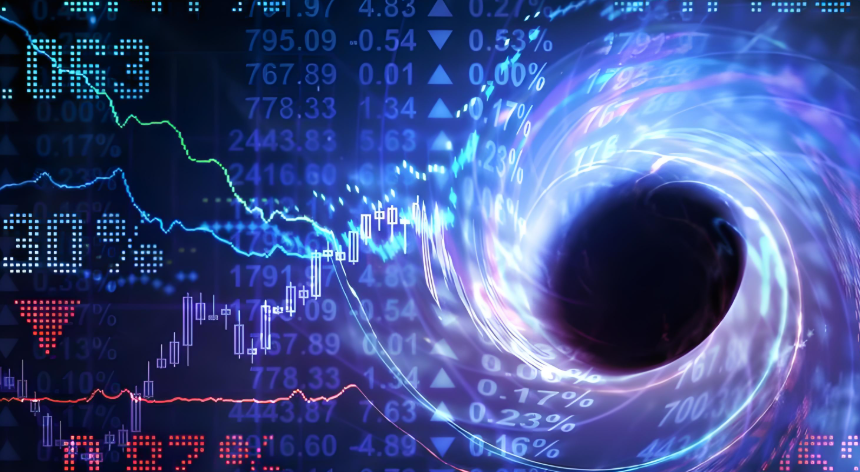Major U.S. Stock Indices Rise Together
Advertisements
As the trading year drew to a close on December 31, 2024, tensions and fluctuations within the US stock market were palpableThis particular day was notable as it marked the last day for trading in what had proven to be a significant year for investorsFutures for the three major US indices—S&P 500, Dow Jones Industrial, and NASDAQ—were witnessing a collective increase as the market buzzed with anticipation, though it felt muted against the backdrop of previous high volatilityFurthermore, parts of European stock markets were closed due to the New Year holiday, shifting investment focus entirely towards U.Sexchanges.
Throughout 2024, the S&P 500 soared by an impressive 23.8%, continuing a trend of remarkable growth, as this marked the second consecutive year that the index climbed over 20%. The Dow Jones followed suit, rising by 13%, but it was the NASDAQ that displayed the most robust performance, with an astonishing increase of 29.8%. Such numbers typically incite excitement among investors and traders alike; however, the reality was that as the end of the year approached, a sense of lethargy settled over the market.
This seemingly paradoxical situation can be attributed to the process of profit-taking that many investors initiated as the year came to a close
Market analysts indicated that against the backdrop of rising uncertainties, especially as a new government awaited entry, it's only logical for investors to reel in their profits, locking in those earnings amidst increasingly skeptical forecastsThe looming caution in the market was not merely paranoid conjecture but rather rooted in serious considerations regarding the Federal Reserve's monetary policy trajectory, which many anticipated would not shift towards easing interest rates in the near futureSuch expectations naturally pointed to diminished liquidity in the markets, generating discussions over whether the upward momentum seen in 2024 would continue into the New Year.
Paul Hickey, co-founder of Bespoke Investment Group, commented on this prevailing sentiment during year-end assessmentsHe noted that—with the significant gains already realized throughout the year and the forthcoming transition of government—such hesitancy from investors was understandable
- US Debt vs. China’s Reserves: A Race to Depletion?
- Did you make money in the A-shares in 2024?
- How to Handle a Market Crash
- What’s Causing Volatility in Asian Markets?
- AI Progress: Models No Longer the Bottleneck
“You can’t blame investors for wanting to lock in profits at this stage,” he remarkedThis thought resonated widely as people continued to mull both the impressive gains of the past year and the uncertainty of what the next would bring.
Interestingly, some popular Chinese stocks listed in the U.Sshowed signs of strength in pre-market tradingNotably, major companies such as JD.com increased by nearly 2%, NIO surged over 1.5%, and XPeng Motors rose by over 1%. Pinduoduo and Alibaba also experienced positive movements, even if modest, further illustrating the variability and regional influences that can rapidly shift market performance.
Reflecting on the broader market environment, it was also a significant note that the U.Smarkets were scheduled to observe a brief hiatus for New Year's Day, allowing traders to regroup and strategize for the year aheadThe pause in operations provided ample opportunity for market analysts to dissect the data generated over 2024, pushing discussions of potential prospects for the upcoming year to the forefront.
Beyond the market fluctuations, Corporate America was buzzing with a plethora of significant announcements
Time and again, technological advancements promised to redefine industriesOn December 31, OpenAI’s CEO Sam Altman unveiled an ambitious slate of innovations earmarked for 2025, which included developments in Artificial General Intelligence (AGI), advanced agents, and a superior upgraded version of GPT-4—not forgetting enhancements to memory storage and deeper contextual engagement featuresThese forthcoming innovations actively laid the groundwork for what many hoped would expand opportunities in AI-driven technologies and applications.
In another noteworthy announcement, Tesla disclosed progress at its Shanghai energy storage super factory, with trial production commencing swiftly after successfully passing completion inspections on December 27. This development announced praiseworthy benchmarks, showcasing Tesla's commitment to evoking growth across its infrastructure, especially after achieving such rapid advancements in just seven short months since groundbreaking.
Additionally, TSMC reported promising advancements with its 2-nanometer production process, ahead of schedule, fulfilling industry expectations and demonstrating a commitment to pushing the boundaries of semiconductor manufacturing

The prospects of shovel-ready projects coming to fruition give credence to hope for an evolving tech landscape, where cut-throat competition drives efficiency and innovation.
Meanwhile, within the hedge fund universe, billionaire investor Bill Ackman stirred conversation on December 30 with key remarks regarding Fannie Mae and Freddie Mac—two giants in the mortgage landscapeHe asserted that a potential privatization of these entities within two years could set the stage for exciting developments heading into 2026. His observations prompted extensive discussions around market remapping as these companies might leverage newfound autonomy post-privatization.
In an unexpected twist, the air taxi firm Volocopter faced financial distress, applying for bankruptcy on December 30 after failing to secure necessary funding for operationsThese developments exemplified the sometimes tumultuous reality of nascent industries battling for survival within competitive markets, even as advancements inch closer to realizable technologies
Leave a Reply
Your email address will not be published. Required fields are marked *